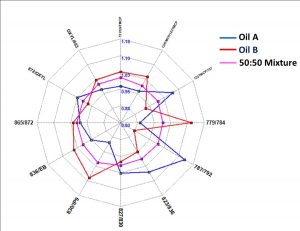The presence of unexpected contaminants in production streams can have drastic effects on the economic viability of oil and gas projects. These unwelcome members of the fluid mixture also present very real safety hazards due to their toxicity and potential for equipment failure resulting from embrittlement or corrosion caused by mercury or H2S.
Responsible operators collect multiple samples for full fluid characterisation during appraisal of oil and gas reservoirs. In principle, this should identify the presence of contaminants within reservoir fluids and permit the design of appropriate production and treatment facilities. Reality is not always so straightforward. Firstly, quantification of mercury and low levels of H2S is notoriously difficult because measurements are extremely sensitive to modification by sorption and oxidation during sampling, sample transfer and analysis. A consequence can be that H2S or mercury is not identified in early tests and only shows up once production has started, by which time any remedial action is extremely difficult and costly.
Even when extreme care is taken to ensure that the best possible fluid sampling and analysis program is carried out, uncertainty remains whether the sampled fluids represent the whole reservoir. This is especially problematic in thinly bedded reservoirs and in reservoirs with compositional grading, where it is impractical to test every zone that may be produced.
Reservoir fluid composition – including the presence and abundance of contaminants – is ultimately controlled by the geological processes affecting the petroleum system. It is important to consider the system holistically because the concentration of critical fluid components might be controlled by processes occurring in the source rock, the carrier system or in-situ within the reservoir itself.
Here at Merlin Geochem, we have developed a proprietary workflow to address the risk of mercury occurrence in reservoir fluids using geological and geochemical principles and observations from high mercury reservoirs worldwide.
We also have extensive experience of pre-drill H2S risking and recently completed a client study to map and predict the concentration of H2S in a reservoir development. Understanding whether H2S is likely to be present, even at very low concentrations, can have significant implications for production facilities design and project economics.
Don’t take a chance on your fluids. For more information on how Merlin can help identify the risk of contaminant presence, or for any other geochemical or fluid related questions, please email info@merlinenergy.co.uk or call +44 (0) 1531 636000.



